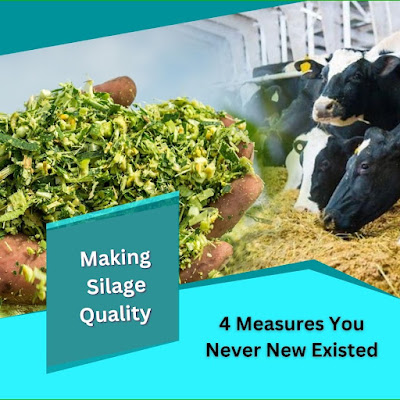Making quality silage: 4 measures you never knew existed
The first rule of making Silage is that once you make a batch of Silage in a year, it becomes an essential ingredient for your feeding program. So if you make poor quality silage in a year, your next year’s feeding schedule will be ruined. In short, silage quality matters. On the other hand, a year of good weather and your excellent silage management skills, when applied, can yield top-quality fodder and perfect health and performance for your cattle.
We deal with many factors daily, which are out of our control, and Silage is one of those elements. However, we can control if we understand the elements of growing, chopping, and ensiling Silage. In that case, it can make all the difference between a year of dealing with forage problems and handling borderline milk yield and a year of perfect ruminant health, performance, and prosperity.
In this post, we will know how to make quality Silage, but different from usual. We promise you haven’t heard of these four measures ideal for producing excellent quality corn silage for sale.
Begin with quality
To make excellent quality silage, you must focus on it from the beginning. We at Silage Agro Private Limited mean that you need to keep the following factors in mind when buying or choosing seeds to make fodder.
●
Yield potential.
●
Digestibility.
● Grain content.
Proper moisture and maturity
The bottom line is we need to Harvest our crops at the proper maturity and moisture content, neither too high nor too low. Patanjali Silage recommends 65-68% approximate moisture for corn silage.
Chopping silage at too high moisture: The following will happen.
●
DM losses.
●
Protein degradation.
●
Highly butyric acid concentrations.
● Decreased palatability.
Chopping Silage at too low moisture: You will face these consequences.
●
Decreased packing potential.
● Decreased density, leading to increased spoilage, mold growth, and mycotoxins.
Please note that the chop length also matters. Silage Agro Private Limited suggests 6 inches for corn silage.
Storing and filling the harvest
Whether using high HP, self-propelled choppers, and custom operating tools to fill the silage piles or manually, if we cannot correctly pack and preserve the fodder, all our effort is useless.
● Remember, you need to tightly pack the Silage as it comes and not wait until the pile is complete with tightening and preserving it.
We need to be patient
Finally, be patient. Fermentation takes time, and opening the Corn Silage Bales at least 4-6 weeks before feed out is optimum. If it is okay with you, we suggest opening the piles 3-6 months after harvest.
With that, we conclude our blog post. I hope you got
valuable information from it. Now it is time for you to gear up and make the
tastiest and healthiest Silage for your cows. Thank you for reading.


Comments
Post a Comment